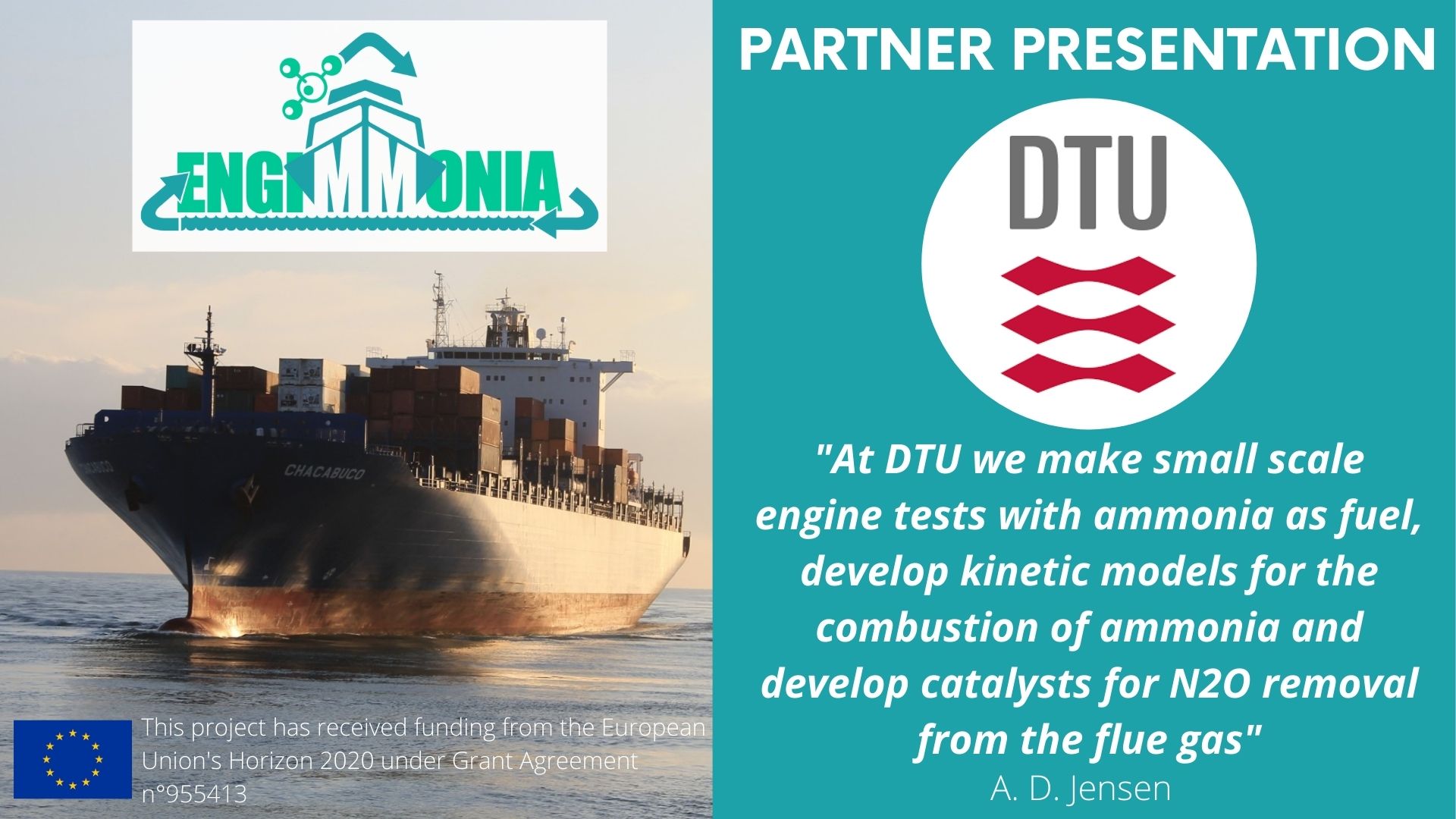INTERVIEW TO anker degn Jensen FROM DTU
Tell us about DTU. What is your core business and role within the project?
The Technical University of Denmark (DTU) carries out education, research, innovation and assistance of the public authorities. Sustainability is at the core of everything we do at DTU. Our role in the project is to develop a technical solution for removing N2O (laughing gas – a very strong green house gas – about 300 times that of CO2) from the exhaust of the ships burning ammonia using a catalyst, to develop kinetic models for the combustion of ammonia and to make small scale engine tests and spray chamber tests with ammonia to understand its combustion behavior and emission characteristics.
Why did DTU get involved in the ENGIMMONIA project? How does this activity fit with the normal business of your organisation?
We already had a close collaboration with the company MAN Energy Solutions which is developing the ship engines for using ammonia as a fuel. We got involved in the project since it required the competencies we have at DTU. Since using ammonia as a fuel is about decarbonizing the shipping sector it fits very well with DTU’s mission to develop sustainable solutions for society.
How do you expect the maritime transport sector to be like in the future?
That is a big question, however, it seems likely that large ocean-going ships will still need to use fuels for combustion engines, and here ammonia is a very interesting candidate since it does not contain any carbon that can be released to the atmosphere as CO2 after the combustion.
Which are the most significant challenges and opportunities related to the use of ammonia/clean energy solutions in the maritime sector in your opinion?
There a many challenges related to the use of ammonia, such as its safe use – as it is very poisonous. Furthermore, scaling up the sustainable production of ammonia to the huge amounts needed if it is rolled out to a major extent, and its bunkering in the harbors will be a major task and likely take many years.
What are your expectations of the ENGIMMONIA project?
We expect to make high level research that we can publish in good journals and that translates into real sustainable solutions to some of the challenges of using ammonia as fuel. At the same time we expect to expand our European network of researchers – hopefully leading to further collaboration across Europe.


